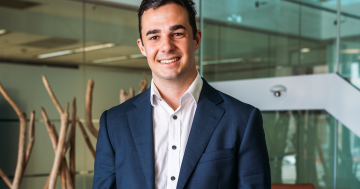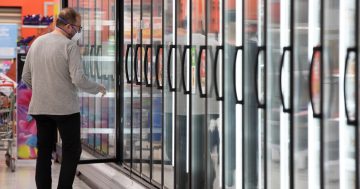Bernard Marr* says tomorrow’s successful brands will be those that can identify customers’ needs in the moment, and respond to those needs with thoughtful, personalised solutions.
 These days, what do most of us do when we want to do, buy or know something? We reach for our phones or tablets.
These days, what do most of us do when we want to do, buy or know something? We reach for our phones or tablets.
These intent-rich moments — precise moments when a person picks up their device looking for information, to find a local business, to complete a task, or simply to buy something — are what Google refers to as ‘micro-moments’.
Basically, whatever we want at any given moment, we turn to our devices for instant solutions.
Those brands that can deliver instant solutions, be it information, products, or whatever, are the ones that will thrive in the future.
According to Accenture (which refers to micro-moments as ‘momentary markets’) 85 per cent of executives agree real-time (or near real-time) delivery is the next big wave of competitive advantage.
In other words, business success is no longer just about capturing markets; it’s about capturing moments.
In essence, this means businesses need to be right there when those crucial, intent-rich moments occur, which in turn means being able to anticipate those moments using data and analytics.
Having done that, businesses need to prove themselves useful in those crucial moments by quickly connecting customers with whatever it is they’re after.
That’s not all, though. As well as catching customers when they need something most and instantly meeting that need, brands must also provide a personalised experience.
This could be personalised search results, recommendations, or customised products.
The challenge, of course, is achieving personalisation on a mass scale. The good news is that technology exists to help.
Think of recommendation engines that can point customers to the products and services they’re most likely to want.
Or intelligent analytic solutions that can turn precious customer data into insights on what they really want.
Product configuration tools that allow customers to decide what they want in a product, combined with 3D printing technology, potentially allow companies to provide customised products on a large scale.
With all this in mind, I believe the next big wave of personalisation will be mass personalisation.
This matters because humans’ average attention span is now worse than that of a goldfish.
Most of us are bombarded with content all the time, and there are never enough hours in the day.
This means when we’re looking for something specific (information, a product, etc.) we need quick solutions.
What’s more, in this age of Netflix recommendations and personalised playlists, we increasingly expect brands to present us with products and services that are unique to us.
We want to feel special. And we’re (generally) willing to pay for the privilege.
According to Deloitte, the majority of consumers are not only willing to pay a 20 per cent premium for a customised product or service, but they would also like to be actively involved in the process
Bottom line: if your business fails to provide a quick, thoughtful response and a personalised experience, customers will likely bounce off elsewhere.
As you might expect, with their masses of consumer data, the big tech giants like Amazon, Facebook, and Google are way ahead of this trend.
However, there are some examples you might not have heard of.
How long do you really want to spend choosing a bottle of wine? If you’re anything like me, not that long.
Obviously, you want something delicious, and you may even have certain characteristics in mind (full-bodied, or dry, or good with fish).
However, you probably don’t want to spend 20 minutes reading wine labels.
Vivino, the largest wine e-commerce platform in the world, has an app where you can simply scan a bottle of wine to see pricing, reviews, and tasting notes.
Crucially, also get personalised Netflix-style recommendations on whether you’re likely to enjoy the wine, based on your past purchases and preferences.
This recommendation feature is available once you’ve rated five wines on the app, and gets more accurate the more you rate.
There has also been a huge rise in personalised skincare solutions. Take Curology as an example.
With the Curology app, you can upload a photo of your skin, get a personalised diagnosis on any skincare issues that you want help with (wrinkles, coloration, etc.), and be presented with the ideal skincare solution.
Curology achieves this through a combination of machine learning and human experts.
Customers can also chat to their human experts for more advice.
Neutrogena does something similar through its Skin360 app, which analyses skin pixels before identifying a unique treatment formula.
This is cleverly combined with Neutrogena’s MaskiD, a 3D-printed face mask that is personalised to the customer’s face shape.
*Bernard Marr is a bestselling business author and futurist, recognised as an expert in strategy, performance management, analytics, KPIs and big data. He is the founder of Bernard Marr & Co and can be contacted at bernardmarr.com.
This article first appeared on LinkedIn.











